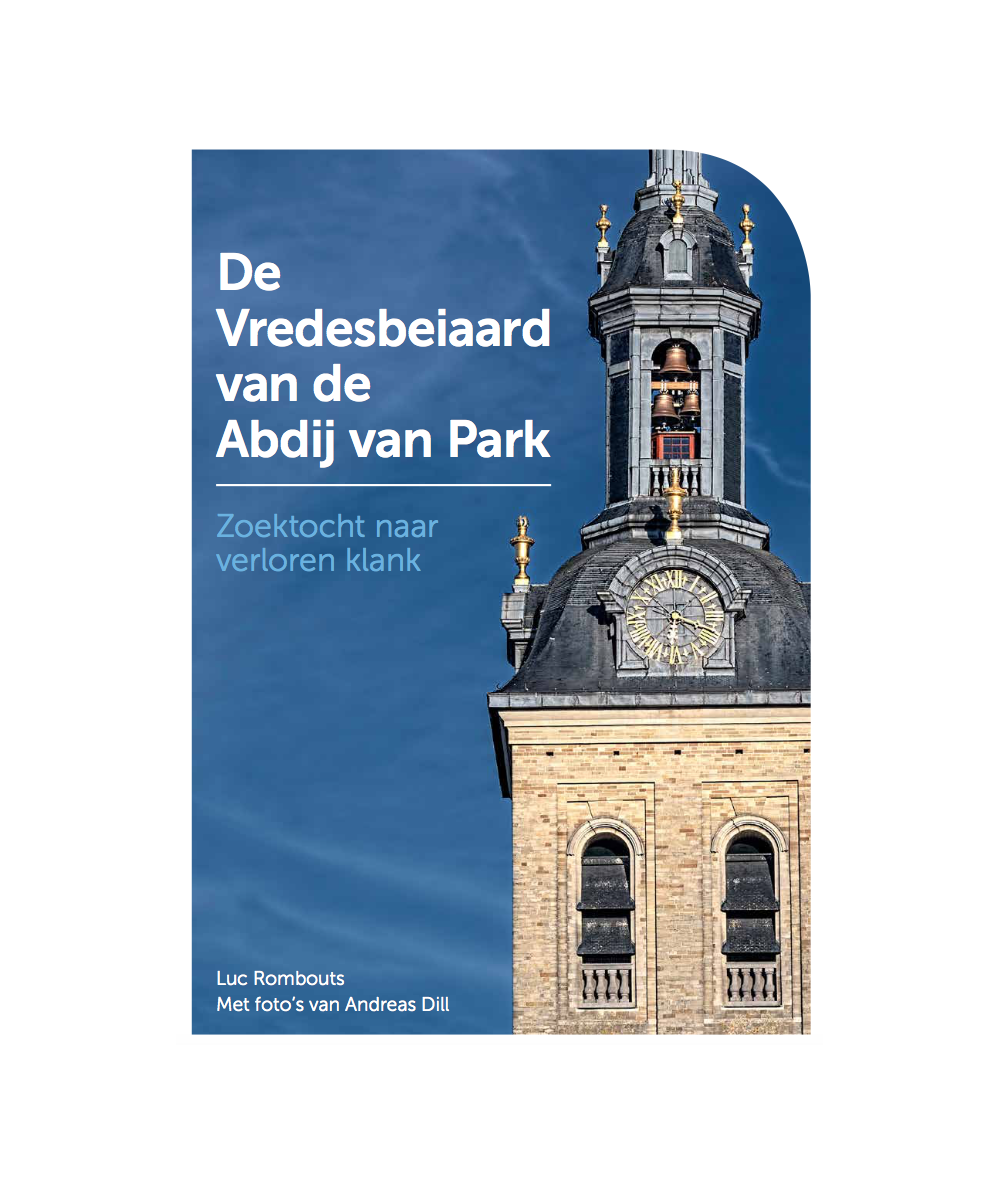Luc Rombouts en Andreas DillDe Vredesbeiaard van de Abdij van Park
De Vredesbeiaard van de Abdij van Park : zoektocht naar verloren klank / Luc Rombouts ; met foto's van Andreas Dill
[Engish below]
De beiaard van de Abdij van Park kende een bewogen geschiedenis. Hij kwam tot stand in 1730, ontsnapte in 1797 aan opeising door de Franse bezetter en verhuisde in 1811 naar de Leuvense Sint-Pieterskerk. Het prachtige instrument ging verloren tijdens de Brand van Leuven in de nacht van 25 op 26 augustus 1914.
In 2013 ontdekte Jens Metzdorf, de archivaris van de stad Neuss aan de Rijn, dat een bataljon reservisten uit zijn stad medeverantwoordelijk was voor de verwoesting van Leuven. De steden Leuven en Neuss besloten om door cultuur te verbinden wat ooit door vuur gescheiden was en engageerden zich om de verloren gegane beiaard op zijn oorspronkelijke plaats te doen herleven. Op 11 november 2018, een eeuw na Wapenstilstand, klonk voor het eerst in meer dan twee eeuwen opnieuw beiaardmuziek in en rond de Abdij van Park.
In dit boek brengt beiaardier Luc Rombouts het boeiende verhaal van de wedergeboorte van de beiaard van de Abdij van Park. Andreas Dill zorgde voor expressieve foto’s.
Dr. Luc Rombouts is beiaardier en onderzoeker. Hij schreef meerdere succesvolle boeken over de beiaardcultuur in de Lage Landen en coördineerde het dossier dat in 2014 leidde tot de erkenning van de beiaardcultuur in België door Unesco.
Andreas Dill is vertaler van beroep. In zijn vrije tijd is hij een gepassioneerd fotograaf. Architectuur is een van zijn geliefde onderwerpen. In zijn beiaardfoto’s brengt hij structuren, vormen en materialen tot leven.
[English]
The carillon of Park Abbey has a turbulent history. It was created in 1730, escaped claim from French occupying forces and moved to the St Peter’s Church in Leuven in 1811. The beautiful instrument was lost during the Fire of Leuven in the night of 25-26 August in 1914.
In 2013, Jens Metzdorf, city archivist of Neuss, discovered that a battalion of reservists from his city was partly responsible for the destruction of Leuven. The two cities Leuven and Neuss decided to use culture to connect what was once separated by fire. They engaged in activities to restore the lost carillon in its original place.
On November 11th 2018, 100 years after the truce, carillon music sounded again in Park Abbey for the first time in two centuries.
In this book, carillonneur Luc Rombouts presents the captivating story of the rebirth of Park Abbey’s carillon. Andreas Dill provided expressive photographs.
Dr Luc Rombouts is carillonneur and researcher. He has written multiple successful books on carillon culture in the Lower Countries and coordinated the file which led to the recognition of carillon culture in Belgium as cultural heritage by Unesco.
Andreas Dill is a translator by profession and a passionate photographer in his spare time. Architecture is one of his treasured subjected. In his carillon pictures, he brings structure, shapes and materials to life.
Uitgever:
Leuven : uitgeverij Averbode
Jaar:
2019
Reeks:
Standaardnummer:
ISBN 978 2 8081 0290 2
Kenmerken:
191 p. : foto's
191 p. : photographs
Bezetting:
Informatie:
Met voorwoord, samenvattingen in Duits, Engels en Frans, bijlages en bibliografie
With preface, attachments and bibliography (only in Dutch) And summeries in English, German and French
Inhoud:
No customer reviews for the moment.
Reviews
No customer reviews for the moment.






